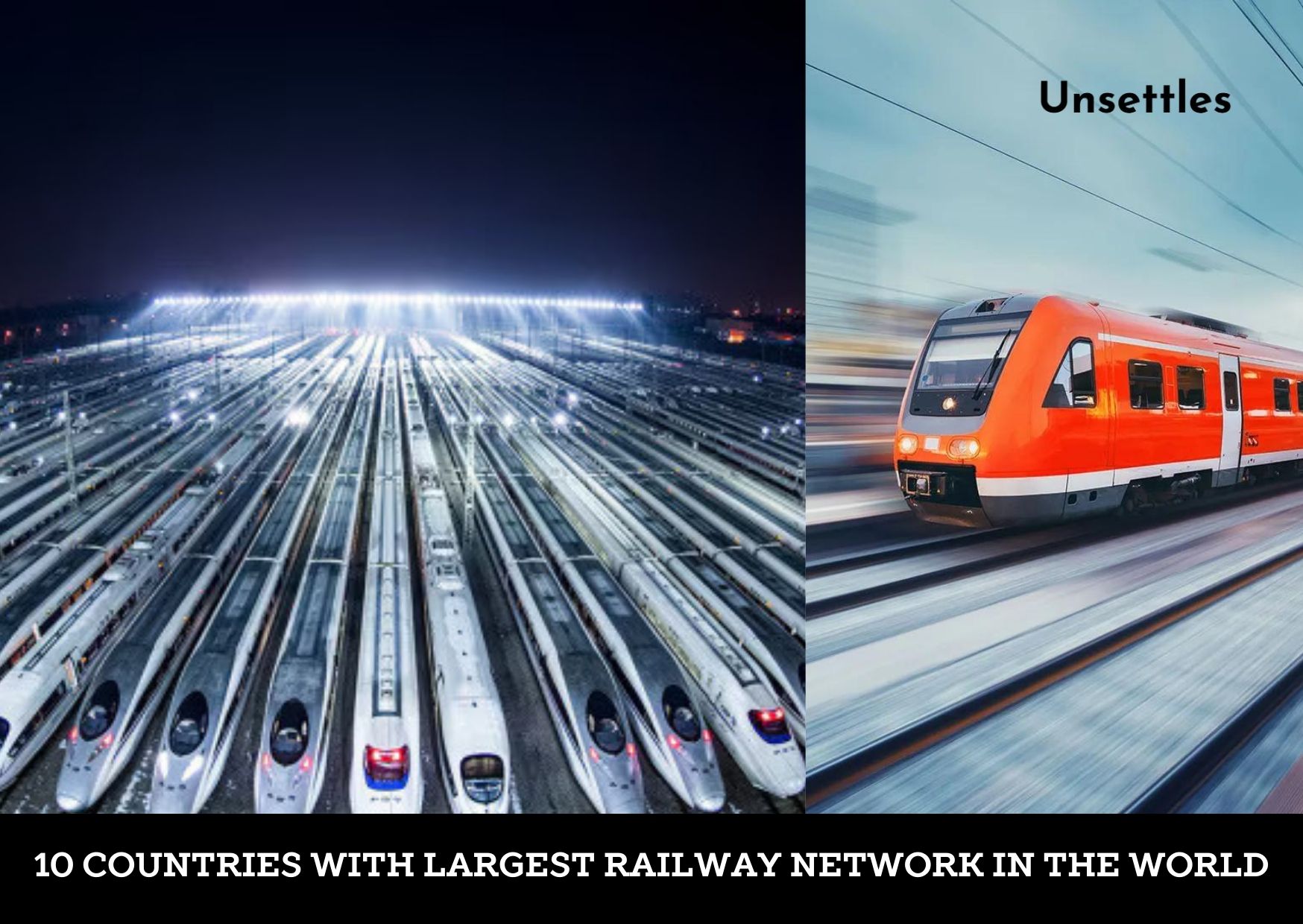Whether it’s for transporting goods, raw materials, or simply commuting, railways remain one of the most efficient modes of transportation available. You’ve probably heard people rave about how European countries boast the best railway networks, but is that really the case? Join us as we take a closer look at the 10 countries with the largest railway networks in the world as of 2024. And trust us, this list might surprise you—some of the countries that made it here aren’t what you’d expect. So, let’s dive in.
United States
The United States tops the list with the world’s largest railway network, stretching over an impressive 220,044 kilometers. This vast network is essential for shipping goods across America’s expansive landscapes. While the U.S. rail system includes both private and public railways, the majority of the infrastructure is privately owned. The major players, known as Class I railroads, handle over 90% of the country’s freight traffic. Although passenger services like Amtrak are vital, especially in the Northeast Corridor, it’s the freight trains that dominate the tracks. Interestingly, only about 2,025 kilometers of U.S. railways are electrified, indicating a strong reliance on diesel-powered locomotives, unlike many other countries where electrification is more prevalent.
China
China holds the second spot with a railway network spanning approximately 159,000 kilometers. The Chinese railway system has rapidly expanded, especially in the realm of high-speed rail, with over half of its tracks—around 100,000 kilometers—now electrified. Each year, China adds more than 10,000 kilometers of new tracks, connecting various provinces and significantly supporting both passenger and freight transportation. This rapid expansion and modernization have made China’s railway system one of the most advanced in the world.
Russia
Russia boasts the longest railway network in Europe and the third-largest globally, with a total length of about 105,000 kilometers. This extensive network links vast territories from Moscow to Vladivostok, with the legendary Trans-Siberian Railway accounting for around 9,000 kilometers. Approximately 54,054 kilometers of Russia’s railways are electrified, facilitating efficient transportation of passengers and cargo across the country’s vast regions. Russia’s railway experience is renowned worldwide, making it a unique travel adventure.
India
India’s railway network ranks fourth globally, covering around 104,647 kilometers, with 60,451 kilometers electrified and actively used. Owned by the state, Indian Railways is a lifeline for both passenger and freight transport across the country. With over 23 million passengers traveling daily, India has the most heavily traveled passenger rail network in the world. It connects rural and urban areas, boosts trade, and drives economic growth, while also providing affordable travel options to millions.
Canada
Canada has the world’s fifth-largest railway network, stretching approximately 49,422 kilometers. The network is primarily used for freight, with Canadian National (CN) and Canadian Pacific (CP) as the dominant operators. Via Rail, Canada’s passenger service provider, connects key cities and regions from Montreal to Toronto and Vancouver, although its routes cover only a fraction of the country. Beyond its utility, Canada’s railway network offers some of the world’s most scenic routes, such as the luxurious Rocky Mountaineer, which traverses the breathtaking Canadian Rockies.
Germany
Germany’s railway network spans about 40,625 kilometers, making it the sixth-largest globally. Known for its efficiency and extensive electrification—around 22,500 kilometers of its tracks are electrified—Germany’s rail system is both expansive and modern. In major cities like Berlin, Munich, and Hamburg, the S-Bahn and U-Bahn systems provide efficient transit options, making it easy for both residents and tourists to navigate these urban areas.
Argentina
Argentina’s railway network ranks seventh in the world, extending over 36,966 kilometers. The network supports both freight and passenger transportation, though a significant portion is dedicated to moving agricultural products, minerals, and other cargo. Argentina’s railways, which are a mix of public and private ownership, play a crucial role in transporting commercial goods from distant regions to export ports. Additionally, Buenos Aires boasts a well-developed suburban rail system that is essential for daily commuting and helps alleviate urban traffic congestion.
Australia
Australia’s railway network covers approximately 33,168 kilometers, making it the eighth-largest worldwide. While the network is predominantly used for freight, it also provides substantial passenger services within cities. Urban rail networks in cities like Sydney and Melbourne are vital for commuting and help reduce road congestion, offering an efficient alternative for daily travel.
Brazil
Brazil has the ninth-largest railway network globally, with an estimated total length of 29,817 kilometers. The country heavily relies on its railways to transport iron ore, soybeans, and sugar for export. Brazil’s railways connect agricultural and mining regions to Atlantic ports, facilitating international trade and economic development. The network also offers passenger services, particularly in major urban centers like São Paulo and Rio de Janeiro, where extensive urban rail networks help reduce traffic congestion.
France
France’s railway network, stretching 29,273 kilometers, ranks tenth globally. The network is renowned for its high-speed services, particularly the TGV (Train à Grande Vitesse), which connects major cities in France and even extends to neighboring countries. Approximately 15,687 kilometers of France’s railways are electrified, enabling the efficient operation of both high-speed and regular train services.
Conclusion
And there you have it—the top 10 countries with the largest railway networks in the world as of 2024. While railway networks don’t undergo frequent changes like road systems, these rankings are likely to remain consistent for some time. However, if any significant updates or changes occur, we’ll be sure to keep you informed with the latest data and insights.
